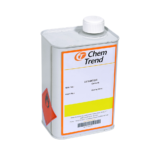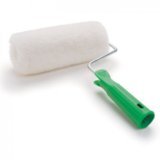Mold Preparation
1. Mold surfaces should be thoroughly cleaned to remove all traces of wax, release agents, sealers and buffing compounds.
2. Do a final cleaning of mold surface with Chemlease® Mold Cleaner.
3. Seal mold with the appropriate Chemlease® Sealer.
Application for Base Coats
1. Mold surface must be thoroughly cleaned to remove all traces of wax, release agents, and other sealers.
2. Surface should be dry and free of contaminants.
3. Saturate clean cotton cloth (not dripping) and wipe on a smooth
continuous film. Apply no more than a few square feet at a
time.
4. When the film begins to evaporate at the edge, wipe the surface
with a second clean dry cotton cloth. Use a circular motion from the outside, working inwards until film is left dry and clear.
See Notes.
5. Repeat above procedures until entire mold surface has been covered.
6. Apply 4-5 coats, allowing 15 minutes between each complete coat.
7. Allow 30 minutes for full cure. Proceed with production.
Notes
Time will vary with room and mold temperature. Wipe off as the solvent begins to evaporate. If the release agent is left on too long, you may notice some smearing or streaking. To remove the smear or streak, rub the affected area with the recommended Chemlease® release agent, and then simply remove the excess sooner than you had before.
Test To Ensure Proper Application
Attach a small strip of masking tape to different areas of the mold. There should be very little resistance when removing the tape if proper release is applied. Compare to an untreated mold. (Tape should adhere to untreated mold).
Touch-Up Coats
Once in production the release film will begin to wear. Rather than applying a touch-up coat once the parts begin to stick, it is better to do preventative maintenance. For example, if trials determine that 20 releases are obtainable between touch-up coats, it is better to reapply a touch-up coat after every 15 cycles. The above- described action will keep the molds in production longer and help establish a routine of quality preventative maintenance.
Important
The recommended number of coats and cure times are a general guideline found to be more than sufficient in a broad spectrum of molding conditions. When molding products with extreme geometries or experiencing low-humidity conditions in the shop, the customer may find the need to extend the cure time between coats and increase the number of coats applied to the mold. The efficiency of a release film is best determined through a combination of tape tests and experimentation.
Storage
Do not store at temperatures above 49oC/120oF. Keep container tightly sealed to prevent evaporation and/or contamination. If stored in cold temperatures allow warming to room temperature before using.
Packaging
Chemlease® 75 EZ is available in a variety of package sizes. Please contact Chem-Trend customer service for details.
Safety Data
Safety Data Sheets are available for all Chemlease® products and should be consulted prior to use of the product.
Further Information
Request information on our complete range of materials: custom- formulated release agents for polyurethane molding; tire lubes and bladder coatings; Mono-Coat® semi-permanent release coatings; aerosol formulations; mold cleaners and sealers; specialized coatings and application equipment.








